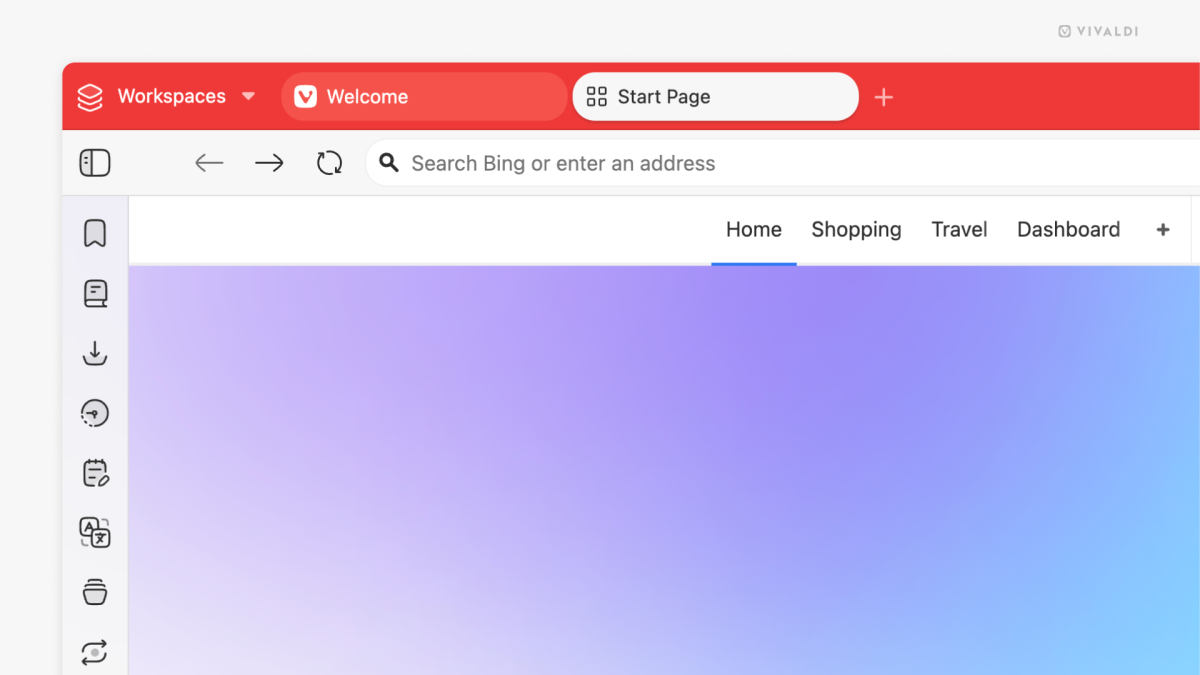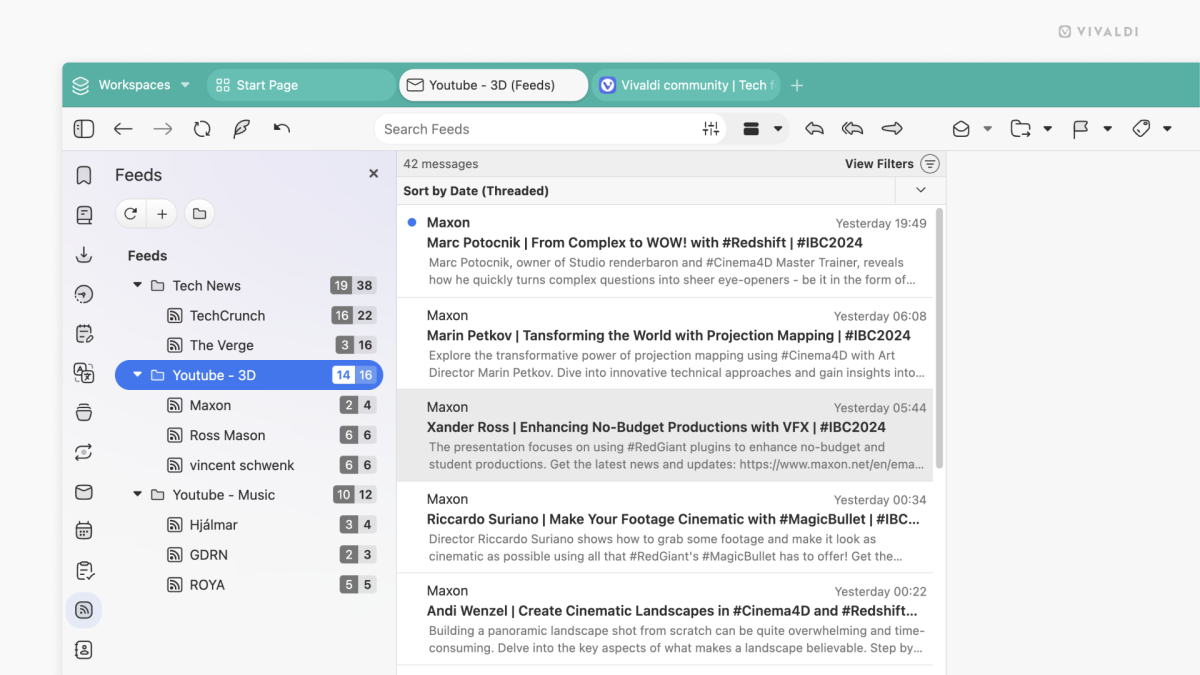[ad_1]
Vivaldi is launching Vivaldi 7.0 today, an updated version of its free Windows browser that adds a new interface on top of a new Dashboard, which is a centralized interface for managing your digital life. And it purposes avoids using AI to do so.
Vivaldi has been one of the browsers I’ve used for several years, in part because of the exceptional flexibility the browser offers. Vivaldi is especially information-dense, placing visible access to a number of bookmarks, feeds, and emails all within a tight space. My colleague Michael Crider has his own reasons for switching from Chrome to Vivaldi, but both of us are sticking with the browser.
In one sense, the new Dashboard feels like some of the efforts at “new tab” pages that browsers have added, where you can take what is essentially a blank page and add customized information to it. The Dashboard, or Start page, allows you to place some of the information Vivaldi typically reserves for its sidebars — calendar, feeds, Instagram, email, and so on — and center them on the page.

Vivaldi
“We have the feeder built in, but in this case, this is more visible,” said Jon Stephenson von Tetzchner, the chief executive of Vivaldi, describing the new Dashboard in an interview. “It’s easily accessible, and you can quickly see if something has changed. And similarly, in the same view, you could have some bookmarks, potentially whatever you have on your agenda, and just about anything else that you’d like to put in there.”
Vivaldi anticipates that users will start filling the space with web widgets, von Tetzchner added.
Vivaldi’s update was designed to give users something new to look at, but von Tetzchner said that he’s very conscious that users sometimes prefer the opposite.

Vivaldi
“I think, obviously, when you’re building software, you would like to see freshness, and that’s what we’re going for this time,” von Tetzchner said. “It’s that’s not something we do very many times, because we know our users are conservative, and I’m sure there will be someone that doesn’t like the fact that you have more space and a [different] structure and the like. And as with anything in Vivaldi, you can have it just the way you want it.”
“People have different ideas of the way things should be done, so you can tailor it to your liking, including the way it used to be,” von Tetzchner added.
Tucked inside the Vivaldi 7 update are new floating tabs, updated icons, instant synchronization of tabs, bookmarks and settings across mobile and desktop, and a feature that includes the ability to instantly jump to the last email you read.
A deliberately light approach to AI
One buzzword that does not appear in the update, however, is “AI.” While there have been AI-adjacent features that Vivaldi has built in, like translation, von Tetzchner said that AI isn’t a priority.

Vivaldi
“We don’t see AI as something that our users are asking for,” von Tetzchner said. “Rather the opposite. I think a lot of people are reacting to force-fed AI. I mean, obviously what Microsoft did with Recall is a great example of that. I think most people would agree that the idea of having a screenshot of your screen every five seconds gives you pause, right? And then the question is, is the functionality that you’re getting in return actually worth it?
“If they want to use AI, they can, they can go to the AI services, but they don’t want it to be in the browser,” von Tetzchner added. “And I think the fact that it’s being pushed so heavily indicates that there’s more to it than just wanting to kind of give you a nice little feature. If the feature is so great, you don’t have to push it that hard.”
You can download Vivaldi 7.0 here.
[ad_2]
Source link


